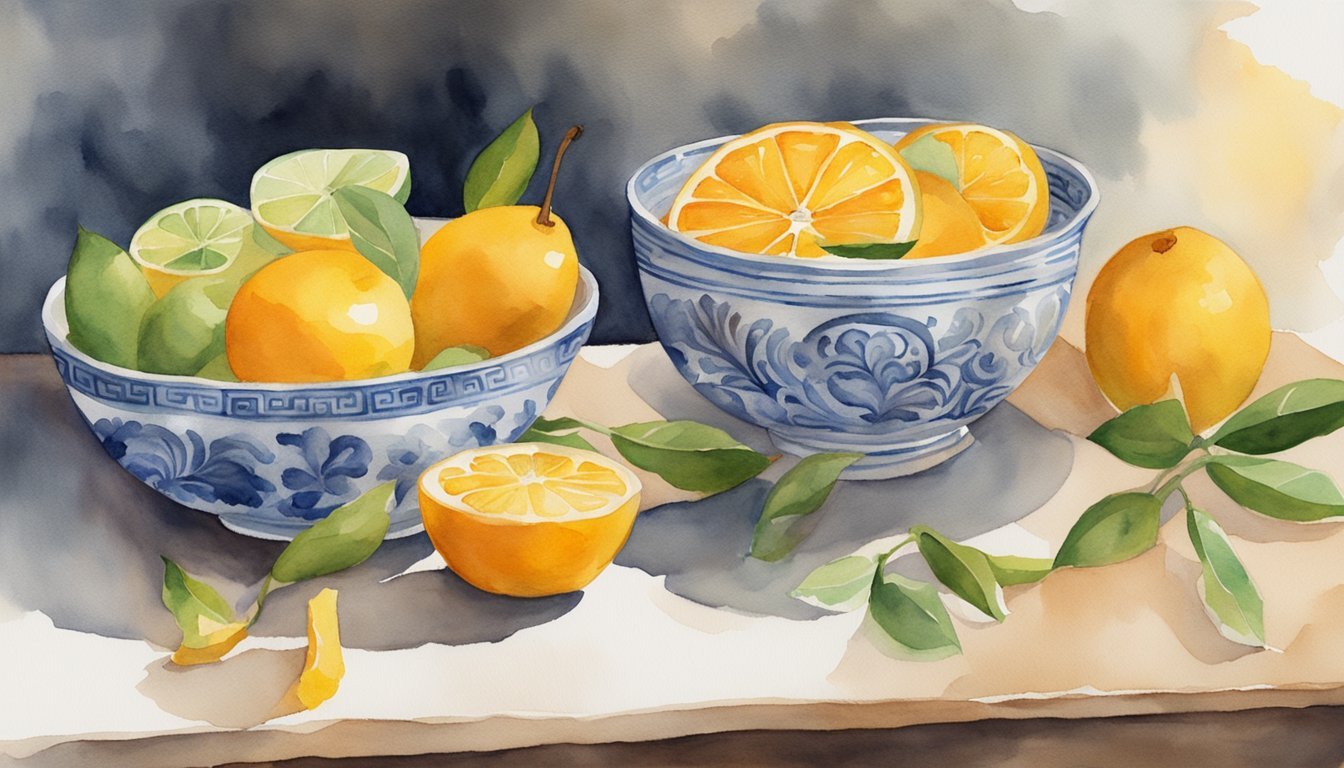Understanding Buddha’s Hand
The Buddha’s hand, known scientifically as Citrus medica var. sarcodactylis, is a unique citron variety revered not only for its distinctive morphology but also for its deep cultural resonance across several Asian traditions.
Origins and History
Renowned for both its physical form and storied past, the Buddha’s hand is thought to have originated in the lower Himalayas. From India and China, it made its journey to the Western world through the Silk Road. Historical texts show that this citrus variety has been a significant part of traditional life in Asia, particularly in China and Japan. Its presence in these cultures is often intertwined with Buddhist temples, showing its significance in religion and traditional customs.
Botanical Description
In botanical terms, Buddha’s hand is a fragrant citron variety, Citrus medica var. sarcodactylis, easily identified by its elongated, finger-like sections. Unlike other citrus fruits, it rarely contains pulp or juice – it is mostly rind and pith. This characteristic rind is rich in essential oils, making it highly aromatic and suitable for zest or flavoring.
Cultural Significance
Symbolically, the Buddha’s hand fruit holds considerable value in many Asian cultures. In China and Japan, for instance, it’s an emblem of happiness, longevity, and good fortune, often exchanged as a gift during the New Year celebrations. Besides its practical uses in flavoring dishes and traditional medicine, it is a potent symbol that merges the secular with the divine. Its fingers are said to represent the many paths to enlightenment. As a new year’s gift, it conveys wishes for prosperity, wealth, and long life, making it an auspicious token. It is also displayed in homes as a decorative and fragrant reminder of these qualities throughout the year.
Discover more about the cultural significance within Buddhism or explore the botanical description.
Culinary and Other Uses

Buddha’s hand is a highly versatile citrus fruit celebrated not only for its striking appearance but also for its multitude of uses beyond traditional fruit applications. With its rich fragrance and concentrated citrus aroma, it offers a unique take on flavoring and garnishing a wide array of dishes, as well as being a delightful addition beyond the kitchen.
In the Kitchen
Buddha’s hand, primarily made up of rind and intensely aromatic pith, finds numerous applications within culinary realms. The zest of the fruit can impart a vibrant, lemony essence to preparations. It can be grated into salad dressings, adding a fresh twist, or used in marinades to lend a citrusy depth to proteins. Often incorporated in its candied form, Buddha’s hand can be a sweet addition to baked goods or an elegant garnish for desserts. It can also flavor beverages, from teas to alcoholic drinks, including craft cocktails and homemade syrups.
- Recipes: Creative chefs use the fruit in various recipes, from pastas to salads.
- Marinades: Finely grated Buddha’s hand boosts marinades with a distinct citrusy kick.
- Vodka & Limoncello: The fruit’s rind is used to infuse vodka or prepare homemade limoncello.
- Tea: Slices or zest brewed as a tea create a soothing, aromatic drink.
- Marmalade: Without the bitterness commonly associated with orange peel, Buddha’s hand makes an excellent marmalade with a unique citrusy flavor.
Ornamental and Other Uses
Outside the kitchen, the Buddha’s hand citron is cherished for its decorative potential and symbolic value. It is often displayed as an ornamental piece or a natural air freshener due to its fragrance, which can perfume an entire room with a gentle floral-citrus aroma, evoking the scent of lemon blossoms. In some cultures, the fruit is linked to happiness and good luck, becoming a fixture in celebratory and ritual contexts. Gardeners value the Buddha’s hand tree as an ornamental tree, treasuring its curious fruit and appealing citrus blossom fragrance.
- Centerpieces: The fruit serves as a beautiful and fragrant centerpiece, especially during winter months when it is in season.
- Good Luck Charm: Often used in East Asia as a symbol of happiness and [long life](https://ourpermaculturelife.com/13-ways-to-use-buddhas-hand-a-most-unusual-and- delightful-citrus/).
- Aromatherapy: Simply placed in a space, it acts as a natural air freshener, releasing a pleasant scent.
- Traditional Medicine: Utilized in traditional Chinese medicine for its perceived healing properties.
In summary, Buddha’s hand citron is a fruit that transcends conventional use, presenting not only as a culinary delight but also as a source of beauty and tradition in homes and celebrations. Its lack of pulp and juice is more than compensated for by its powerful zest and multifaceted role in the gastronomic and cultural landscapes.

